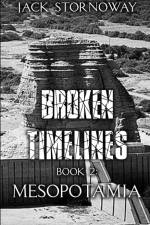von Scriptural Research Institute
22,00 €
The Amarna Letters are a collection of clay tablets found in the ruins of El Amarna, Egypt, in the 1880s. The city of El Amarna was built by the Pharaoh Akhenaten, during his religious reforms in the 1340s BC, but was then abandoned after he died and Egypt reverted to worshiping the old gods. These letters provide a unique glimpse into a period of Egyptian history, that the Egyptians themselves attempted to erase. After Akhenaten's heir Tutankhamen died, his successor Ay was only able to hold the throne for a few years before Horemheb seized it, and attempted to reunited the Egyptians by erasing all records of Akhenaten's reforms, which included erasing Akhenaten's name from almost every record in Egypt. By this period, El Amarna appears to have already been mostly abandoned, and therefore Egyptologists were able to reconstruct the strange story of Akhenaten's reign, in the middle of the New Kingdom era.The Amarna letters were recovered from the royal archives in El Amarna, where they appear to have been archived after having been translated for the royal court. The letters are inscribed on clay tablets in Cuneiform, the dominant form of writing in Mesopotamia, Canaan, and the neighboring cultures in Anatolia and Cyprus at the time. The shape of the Cuneiform logograms used are Akkadian, the parent form of the later Neo-Babylonian, Neo-Assyrian, and Ugaritic forms of Cuneiform, however, the language used in the Letters is not pure Akkadian. The Letters are between various members of the Egyptian royal court, and many different cities and nations across the Middle East, including Babylon, Assyria, Mitanni, and Cyprus, and therefore the language within the Letters is not consistent. Within the letters from Canaanite cities, all of which were subject to Egypt at the time, several transliterated names are also used, which appears to be a direct precursor to the later development of Ugaritic Cuneiform by 1200 BC, which was an abjad similar to the Canaanite script that was developed by 1000 BC, however, used Cuneiform logograms instead of alphabet-like letters.The surviving letters were mostly about trade and diplomacy, however, do include a great deal of information about what was happening in the Middle East at the time. In particular, they demonstrate how limited Egypt's actual control of its Canaanite holdings were, where the governors of cities were constantly requesting military help to defend themselves against each other, the marauding Habirus, and the Hittite-backed Amorites in northern Canaan. The Amarna Letters were written during the mid-1330s BC, during the reigns of the Pharaohs Amenhotep III and Akhenaten, although it is not always clear when in their respective reigns the letters were written, or even which pharaoh was on the throne at the time.











